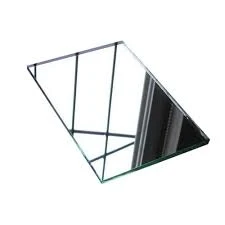

The Allure of Decorative Architectural Glass
In the world of architecture and design, decorative architectural glass has emerged as a remarkable medium that combines functionality with aesthetic appeal. This unique form of glass is not merely a structural element; it is a canvas for artistic expression, transforming mundane spaces into extraordinary environments. From historic cathedrals adorned with intricate stained glass to modern glass facades that reflect intricate patterns, decorative architectural glass captivates the imagination and elevates the built environment.
Historical Context
The use of glass in architecture dates back thousands of years, but it was during the Gothic period that decorative glass truly began to flourish. Stained glass windows became a hallmark of cathedrals, designed to narrate biblical stories and create an ethereal atmosphere as sunlight filtered through colored panes. These masterpieces not only demonstrated the technical prowess of glassmakers but also served a communal purpose—bringing together worshippers through a shared visual experience.
As industrialization progressed in the 19th century, advancements in glass-making techniques led to the rise of new decorative forms. Leaded glass, etched glass, and glass mosaics gained popularity, allowing artisans to explore a variety of styles and motifs. This period also saw the integration of glass into public buildings and homes, where it was used to create stunning art installations that brought spaces to life.
Modern Innovations
Today, decorative architectural glass continues to evolve, driven by innovative technologies and contemporary design philosophies. Architects and designers are utilizing advanced techniques such as digital printing, sandblasting, and lamination to create bespoke glass installations that are as functional as they are beautiful. The possibilities are virtually limitless; from abstract patterns to photorealistic images, decorative glass can convey messages, enhance privacy, and alter perceptions of space.

One of the most exciting developments in modern decorative glass is the use of sustainable materials and practices. With an increasing focus on environmental responsibility, many manufacturers are now producing glass products that are not only visually stunning but also eco-friendly. Recycled glass and low-emissivity coatings ensure that decorative architectural glass contributes positively to both aesthetic and environmental goals.
Applications in Design
The versatility of decorative architectural glass allows it to be employed in a variety of applications across different sectors. In commercial spaces, glass partitions with artistic elements can define areas while maintaining an open, airy feel. In residential interiors, decorative glass can be incorporated into windows, doors, and lighting fixtures, adding a touch of elegance and uniqueness to home design.
Moreover, public art installations utilizing decorative glass enhance civic spaces, turning ordinary areas into vibrant community focal points. Whether it's a stunning mural made entirely of glass tiles or a series of striking glass sculptures, these projects invite interaction and engagement from the public, forging a deeper connection between art and community.
Conclusion
As we move further into the 21st century, decorative architectural glass continues to inspire and innovate. It serves as both a functional and artistic medium, reflecting our cultural values and aspirations. Whether in historical structures or modern developments, this remarkable material invites viewers to engage with their environment in meaningful ways. By bridging the gap between art and architecture, decorative architectural glass not only enhances aesthetic experiences but also enriches our understanding of design in the built environment. As technology advances and artistic boundaries are pushed, there is no doubt that the allure of decorative architectural glass will endure, shaping the landscapes of our cities and our lives for generations to come.